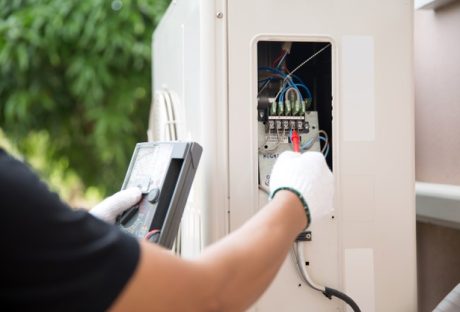As digital services are becoming more critical to how every business runs, and systems continue to grow in sprawl and complexity, more companies are looking for new technological solutions to reclaim control of their infrastructure. Hyperconverged infrastructure (HCI) is now one of the most in-demand solutions.
Many organizations have chosen converged architecture to simplify their systems, while hyper-converged solutions carry this notion of operating numerous parts of a single, centralized system to its logical conclusion.
In addition, HCI offers a cost-effective and more efficient means of managing extensive IT infrastructure, but it might only be appropriate in some circumstances. As a result, you should know a few things about the benefits and drawbacks of HCI systems when deciding on one.
What Exactly Is “Hyperconverged Infrastructure”?
HCI is a software-defined infrastructure solution that virtualizes all components of a conventional hardware-based system. Networking, computing, and storage are all integrated into a single system.
Many of the difficulties involved with data center operations may be removed by bringing everything under one roof, making for a more streamlined, adaptable solution.
Moreover, HCI differs from those other converged infrastructure technologies in that it focuses on services rather than servers. Any changes may be instantaneously mirrored throughout the whole system, and workloads controlled from a single place when apps and the hardware they reside on are handled from one system.
6 Hyperconverged Infrastructure Benefits:

The goal of HCI is to make managing rapidly increasing networks as simple as feasible. And firms may expect to reap various benefits as a consequence of this.
1. Greater Reliability
Using software-defined infrastructure enables automated tools to handle activities like workload monitoring and balancing to optimize resource utilization and keep a real-time watch on a system’s health, making modifications as needed to sustain performance.
Furthermore, if a node fails due to a problem, others may provide service continuity, increasing resilience and enabling administrators to replace or add nodes without disrupting operations.
2. Easier Management
Once systems are installed, maintaining them efficiently becomes considerably simpler. Compared to older options, optimizing and monitoring HCI installations is straightforward, with automated software removing most of the day-to-day management from the hands of IT professionals.
Additionally, administrators may operate from a single management platform in a distant location when modifications are necessary, with fundamental tasks such as backups handled through simple point-and-click operations.
3. Better Scalability
Another major benefit of HCI is the ability to develop and expand in any business. A system is more easily scalable when combining storage, computing, and network solutions. Expanding your infrastructure’s capabilities in a legacy system is significantly more complicated. You may need to purchase new gear, such as a new hypervisor and servers, and spend some time configuring it.
Scalability is critical for expanding businesses. It is also essential for any firm whose IT requirements may alter abruptly. New resources and capabilities may be easily added to a framework using an HCI system. Everything is defined by software. The system’s hyper converged infrastructure software may adjust automatically to accommodate changes.
4. Simplified Deployments
HCI systems simplify service implementation. With a single, virtualized network, IT admins won’t waste time thinking about product compatibility since they’ll deal with a single supplier for all the essential tools. Because the components are pre-configured, the energy and time required to acquire, integrate, and install conventional infrastructure is saved.
5. Reduced Costs
Most businesses employ hyperconverged infrastructure because it lowers workload operating costs throughout their life cycles. It can consolidate equipment resources and enhance their use. Besides that, it will significantly decrease the demand for additional servers and power and cooling needs.
Because hyperconverged infrastructure may be built using commodity hardware, enterprises can save the costs associated with installing specialist servers, network components, or storage.
Direct-attached storage is used in hyper-converged infrastructure. It assists businesses in avoiding the significant costs associated with establishing and administering a SAN. They may acquire HCI software and develop their HCI systems with the assistance of a reference architecture.
6. Improves Performance
HCIs may assist increase the overall efficiency of your workloads since they function as a single system. An HCI system, for instance, may use both SDDs and HSDs for storage, guaranteeing that the varying needs of various applications are addressed most cost-effectively. Interestingly, since processing and storage operations are maintained near together, cabling and latency are reduced.
3 Drawbacks Of HCI
Before choosing to use HCI, businesses must first grasp the possible challenges. As a relatively new solution for controlling data center operations, there will be a few obstacles to overcome, particularly if businesses are shifting from old technology for the first time.
1. Hardware Interconnectivity
Many HCI services are constructed on the concept that everything goes as a bundle from the same supplier, which may lead to concerns like vendor lock-in to ensure performance if you’re not cautious.
While extending an HCI system using low-cost minimum resources usually is feasible, this will likely result in performance concerns since it will perform less well as a fully-converged platform designed particularly for that environment. Organizations are often forced to choose between performance and cost when scaling up their systems.
2. Compatibility Issues
It is critical to distinguish the virtualization capabilities of HCI technologies from actual cloud computing solutions and assume they coexist harmoniously. Some HCI settings may struggle to properly share resources across numerous systems and offload particular activities to cloud services. This is particularly true when a company employs equipment from leading suppliers.
3. Greater Power Requirements
HCI designs pack a lot of workloads into a small area, which typically means they use more power than data centers are built for. While this may be addressed by transferring certain tasks to the cloud when practicable, administrators may need to consider reorienting their sites to guarantee enough power and cooling options to satisfy demand, which can incur additional expenditures.
Conclusion
Creating the proper IT framework is critical to the success of any firm. You’ll be well-positioned for success if you reach peak productivity and cover your future demands. Hyperconverged infrastructure might be the answer you’ve been looking for. The benefits listed above should have made it apparent why you should consider this arrangement.
Read Also:






















